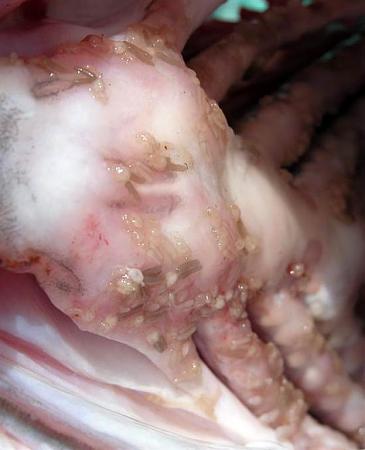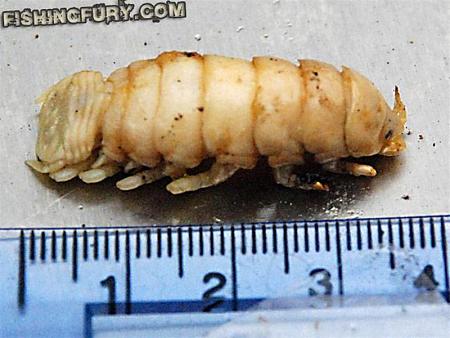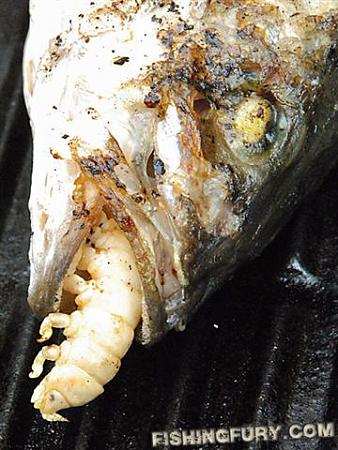-
 striped bass and other fish parasites
striped bass and other fish parasites
I know about sea lice because we see them a lot. Some of these other creatures are quite interesting, though.

gill maggots
http://www.tnfish.org/FishDiseasesPa...Negus_TWRA.htm
http://www.tnfish.org/FishDiseasesPa...hParasites.pdf
tongue eating louse


Cymothoa exigua
From Wikipedia, the free encyclopedia
Jump to: navigation, search
Cymothoa exigua
Scientific classificationKingdom:Animalia
Phylum:Arthropoda
Subphylum:Crustacea
Class:Malacostraca
Order:Isopoda
Family:Cymothoidae
Genus:Cymothoa
Species:C. exigua
Binomial nameCymothoa exigua
(Schiødte & Meinert, 1884)Cymothoa exigua or the Tongue eating louse is a parasitic crustacean of the family Cymothoidae. It tends to be 3 to 4 cm long. This parasite enters through the gills, and then attaches itself at the base of the spotted rose snapper's (Lutjanus guttatus) tongue. It then proceeds to extract blood through the claws on its front three pairs of legs. As the parasite grows, less and less blood reaches the tongue, and eventually the organ atrophies from lack of blood. The parasite then replaces the fish's tongue by attaching its own body to the muscles of the tongue stub. The fish is able to use the parasite just like a normal tongue. It appears that the parasite does not cause any other damage to the host fish.[1] Once C. exigua replaces the tongue, some feed on the host's blood and many others feed on fish mucus. They do not eat scraps of the fish's food.[2] This is the only known case of a parasite functionally replacing a host organ.[3]
There are many species of Cymothoa,[4] but only C. exigua is known to consume and replace its host's tongue.
In 2005, a fish parasitised by what could be Cymothoa exigua was discovered in the United Kingdom. As the parasite is normally found off the coast of California, this led to speculation that the parasite's range may be expanding.[5] However, it is also possible that the isopod traveled from the Gulf of California in the snapper's mouth, and its appearance in the UK is an isolated incident. The animal in question will be put on display in the Horniman Museum.[6]
In 2009, another "tongue-eating" isopod was found by fishermen inside a weaver fish off the Jersey coast. [7]
http://images.google.com/imgres?imgu...%3Den%26sa%3DG
-


Just fantastic.  The article says you can eat fish with these maggots in them. I know I wouldn't.
The article says you can eat fish with these maggots in them. I know I wouldn't.
 Posting Permissions
Posting Permissions
- You may not post new threads
- You may not post replies
- You may not post attachments
- You may not edit your posts
-
Forum Rules




 Reply With Quote
Reply With Quote The article says you can eat fish with these maggots in them. I know I wouldn't.
The article says you can eat fish with these maggots in them. I know I wouldn't.
